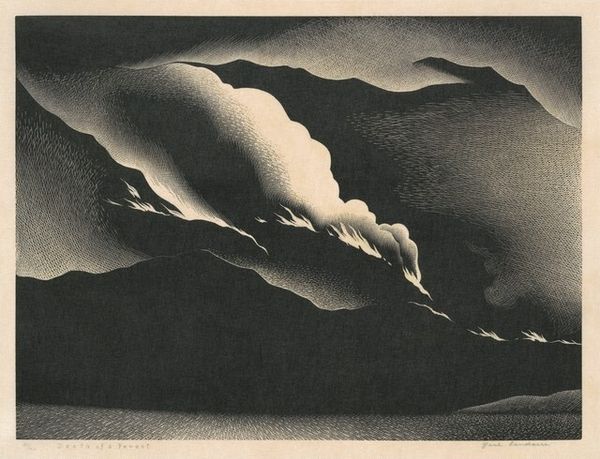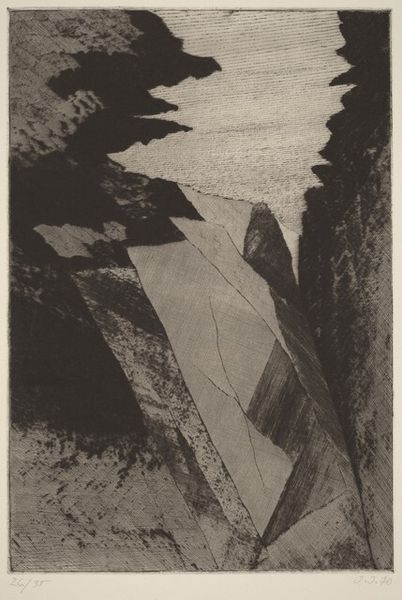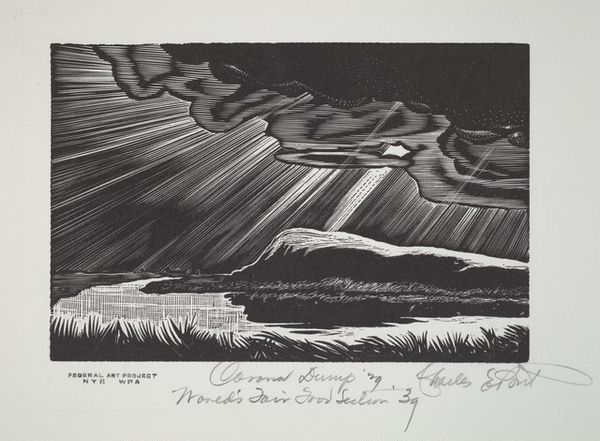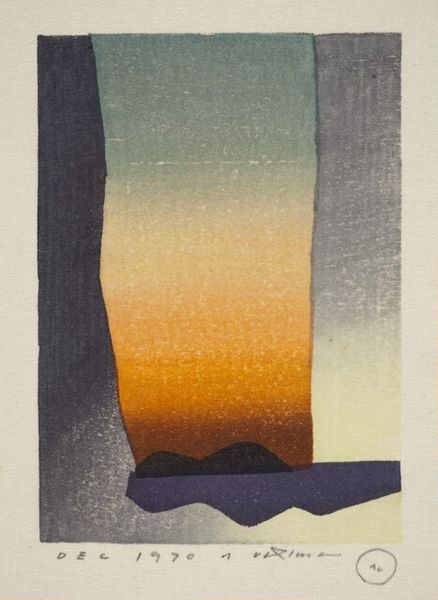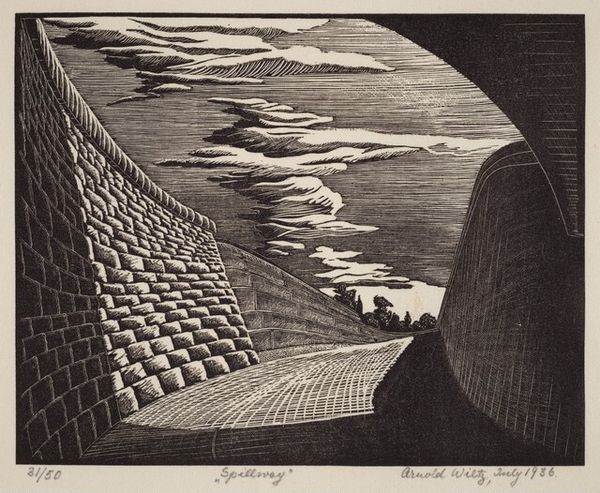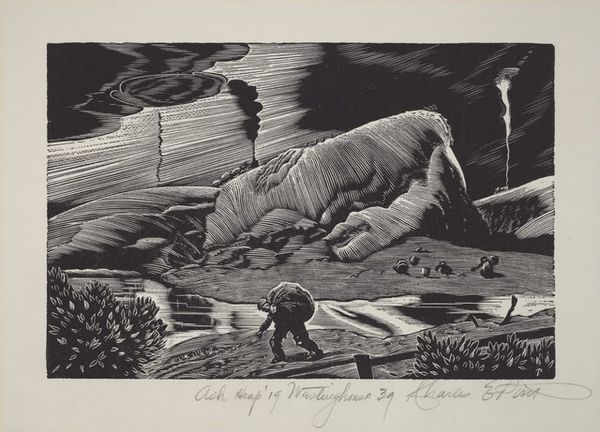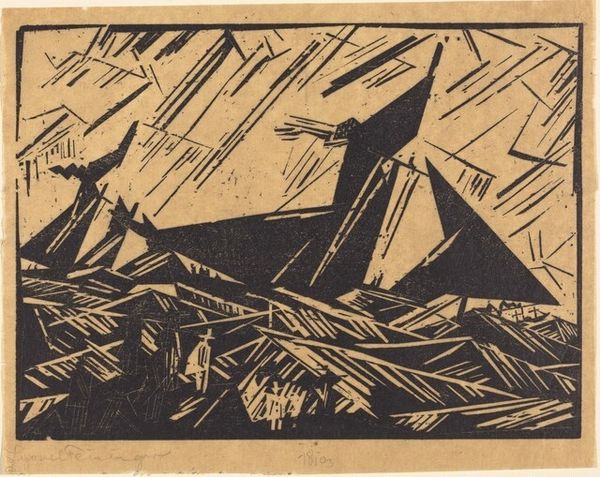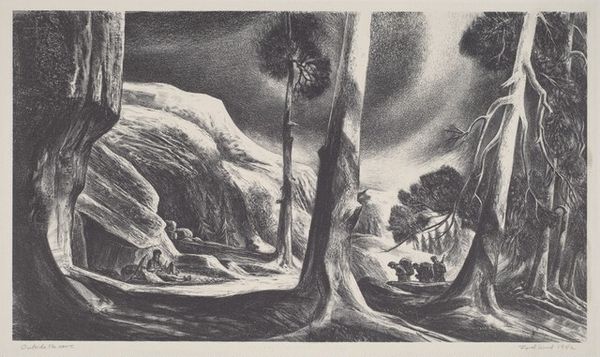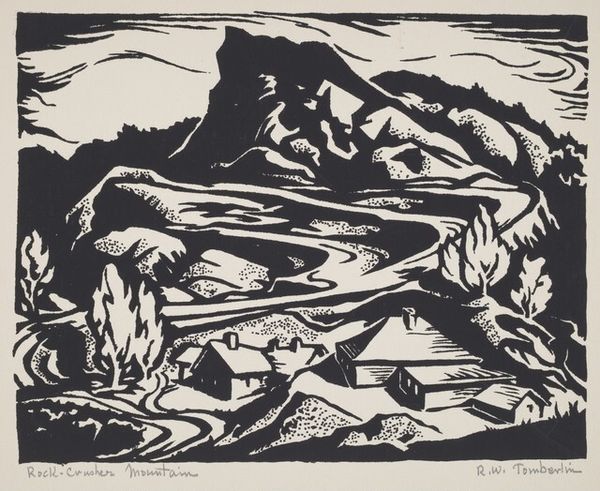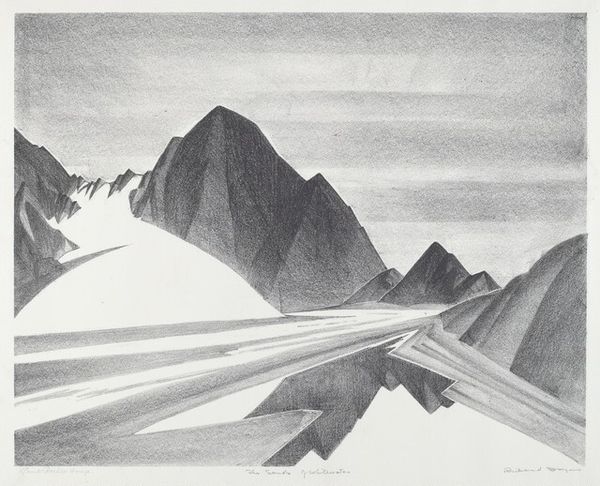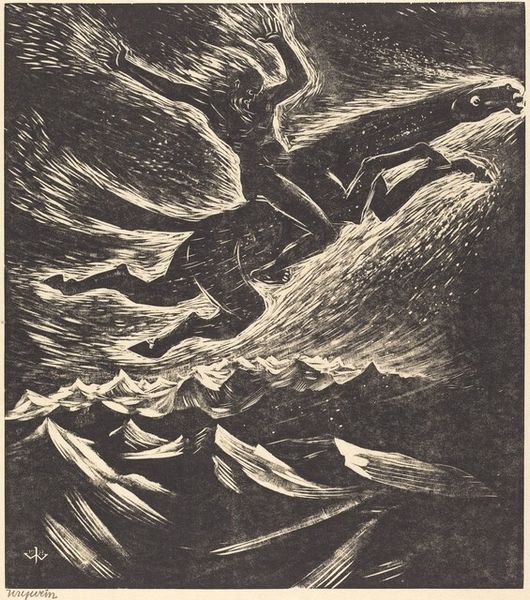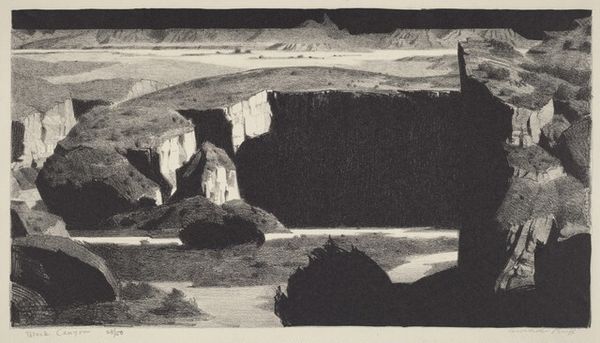
print, linocut, woodcut
# print
#
linocut
#
landscape
#
caricature
#
linocut print
#
woodcut
#
regionalism
#
realism
Dimensions: image: 27.94 × 33.34 cm (11 × 13 1/8 in.) sheet: 38.1 × 41.91 cm (15 × 16 1/2 in.)
Copyright: National Gallery of Art: CC0 1.0
Curator: As we contemplate Carroll Thayer Berry's linocut print, "Lobsterman - Maine," created in 1966, I am struck by the interplay of light and shadow. There is a somber yet steadfast feeling to it. What do you first see in this piece? Editor: My immediate impression is of isolation, perhaps even vulnerability, yet it’s counterbalanced by the steadfast presence of that small boat amidst monumental cliffs. There's almost a symbolic David and Goliath dynamic here. Curator: Absolutely, and thinking about the era, the image resonates with a sense of regional identity rooted in resource-based labor. Berry lived and worked in Maine; we must see this through the lens of 20th-century American realism and regionalism, when labor was so thoroughly integrated into the country’s cultural imagination and political realities. How do you view the linocut as a method expressing such sentiment? Editor: Linocut as a medium lends itself to this. The bold contrasts, achieved through careful carving, mirror the ruggedness of both the Maine coast and the lobsterman’s existence. Visually, it emphasizes the strength required to confront a potentially harsh environment; beyond that, this art piece creates a cultural echo. Curator: True, linocuts allow for sharp delineation that emphasizes both the beauty and the precarity of the natural world and of a local labor force whose historical, political, and sociological complexities can get reduced in such a romantic portrayal. Editor: I agree. This reminds me of traditional maritime imagery, how they can create or solidify heroic identities. I can’t help seeing this as an iconic representation—a hardworking figure sailing between those symbolically fraught dark and light crags. It feels embedded with deep visual memories tied to resilience and self-reliance. Curator: Yes, there's tension between those traditional romantic views of maritime labor and the more gritty socio-economic realities. I leave the work more critical of such representations. Editor: For me, I see layers—nostalgia, struggle, fortitude—and find myself drawn to the visual legacy carried within that little boat braving a monumental landscape.
Comments
No comments
Be the first to comment and join the conversation on the ultimate creative platform.
